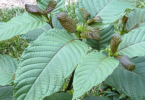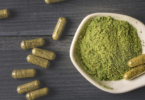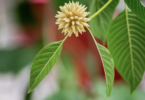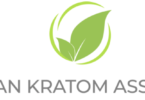
The DEA is planning to place the chemicals present in the ancient plant called kratom on the Schedule 1 Controlled Substances List at the end of this month. If that plan goes through, kratom will take a spot alongside drugs like heroin, MDMA and LSD—substances labeled as having “no currently accepted medical use and a high potential for abuse.” Millions of people who drink a tea made from its leaves for a variety of reasons—from pain relief to depression—will abruptly lose a remedy they’ve come to rely on. And all of this is happening on an accelerated timeline that has those closest to the issue wondering how questions of efficacy and marginal evidence turned into an emergency drug scheduling with few if any precedents.
This isn’t a simple issue, and choosing which angles of the story to cover isn’t a simple decision. My fellow FORBES contributor David Kroll has done a fine job of touching on the pharmacology of kratom’s natural alkaloids (mitragynine and 7-hydroxymitragynine) and several issues related to the DEA announcement, and I’m not going to retread that ground here. Rather, I think the perspective I can bring to the story of kratom is as someone who hadn’t planned to cover it, but ended up with a parade-side view of events leading up to the latest.
First some quick background: I started investigating kratom about four years ago, though my original intention wasn’t to cover it at all. I was researching the burgeoning synthetic drugs (loosely called “bath salts” at the time) and happened upon Mitragyna speciosa, better known as kratom. My first article on FORBESabout the plant questioned if kratom deserved to be placed in the same light as bath salts, despite its chemical differences with the dangerous synthetics.
The piece was widely read and prompted a wave of feedback. The most critical commenters and emailers said I was conflating kratom alkaloids with synthetics and didn’t have enough information to make grounded assertions. What struck me most about the reaction wasn’t the specific criticisms, but a sense of passionate clear-thinking from the small army of responders. So I decided to take them seriously and accept their implicit (in some cases explicit) challenge: try kratom for myself and then make a judgement.
Recommended by Forbes
My follow-up article on FORBES announced I’d be doing just that, and the experiment was on. After a month or so, I posted my findings on my personal website. It’s by far the most read post on my site and garnered more comments than anything I’ve written even for major pubs. What I didn’t realize at the time was that my little public experiment would provide a close perspective on the evolving kratom story for the next three years leading up to the latest events.
My perspective on that story is that it roughly breaks out into three components: a rush to judgement based on poorly understood information, the marketing and selling of certain kratom products, and public health policy that at times seems fueled more by hysteria than facts. A fourth and related component, though harder to flesh out, is a case of conflicting interests.
The rush to judgement sets the tone for the rest of the story, and it begins with fear about an altogether different group of substances. The synthetic drug explosion in this country is a severe and growing problem, as documented here and elsewhere. From the early days of bath salts to the more recent spread of drugs like flakka, officials trying to corral the problem are facing a nimble overseas industry of unscrupulous chemists always seeming a couple moves ahead. Recent estimates suggest that more than 150,000 synthetic labs in China alone are pumping out new drugs for the world market. No sooner is a synthetic compound identified and banned than another takes its place. It’s a nightmarish game of whack-a-mole. State after state has introduced legislation banning the known synthetics in an attempt to at least cut off part of the supply. But those well-intentioned efforts also opened the door for factions with a larger agenda to squeeze other substances into the ban lists, kratom alkaloids among them.
Unless you know what you’re looking for (and, understandably, most state legislators do not), names of synthetic and natural chemicals are indistinguishable. Mitragynine wouldn’t jump out to someone as a natural alkaloid unless they’re also provided with balanced background information, so supporters of kratom, like the American Kratom Association, launched state education campaigns to clarify what often appears to be intentionally unclear.
A handful of states banned kratom (Tennessee, Alabama and Arkansas among them), while others decided against banning once the issues were clarified. Some have considered and tabled questions about kratom for future votes. This is largely immaterial now, if the DEA’s plan to schedule 1 goes through, but it’s worth considering as history leading to where we are. The main point is that all the way through, the issues surrounding kratom and its alkaloids haven’t been clear. Education was necessary to thwart a rush to judgement. Research and testimonies showing benefits of kratom had to be brought to light, along with the negatives the pro-ban faction positioned as the only story worth knowing.
At the same time, the harm caused by synthetics sparked a media frenzy, with name after name of dangerous drugs tossed out to the public. It’s not hard to see how kratom was pulled into the frenzy without thoughtful regard for important distinctions that set it well apart from any of the other substances discussed.
The fact that many people have used kratom to withdraw from opioids muddies the waters further. The testimonials from people who were, without hyperbole, dying on everything from heroin to oxycodone and then found a way out of their hell through kratom are legion online. Some of the most moving emails after I posted the results of my experiment came from people close to giving up hope in their battle against opioids, but then came across kratom and suddenly saw new light to reclaim their lives. Many of them were suffering from chronic pain and discovered in kratom relief without committing themselves to life-long pain med dependencies. These are anecdotal stories, but having read many of them I don’t doubt their sincerity or veracity. More than once was I told, “It saved my life.”
And there’s solid research to support what these people experienced. As one recent example, a study published in the Journal of the American Chemical Society explored specific mechanisms that seem to make kratom alkaloids effective for pain management—the trigger that causes a large percentage of opioid addiction—though it’s not an opioid. These are illuminating findings, yet they’re being bulldozed under a mountain of misinformation.
One of the greatest tragedies of the DEA’s plan is that a significant community of people using kratom to climb out of the hell of opioid addiction may again fall prey to the same substances that were killing them. And many who might have avoided getting hooked on pain meds will lose a viable alternative. I won’t spend time exploring the opioid epidemic here (there’s news on that every day of the week), but it’s worth wondering aloud whether banning an herbal substance that was helping a significant number of former opioid addicts—and could help prevent future cases of addiction—will worsen what’s already a horrific problem.
Another large segment of kratom users suffered from debilitating depression and anxiety and found in the plant a way to gain an edge on those demons that prescription meds and other remedies didn’t provide. Some of them were dependent on benzodiazepines like Xanax (the addiction profiles of which are well-documented and alarming) and were simply looking for a better way to address the problem. Again, I heard from people in this group after my articles were published and their stories were often detailed and moving.
Collectively, what these testimonials, along with the research, represent is a balance lacking in the latest phase of the debate, a debate on the brink of being stymied.
Kratom is an extremely old plant with a large following both in this country and overseas, and yet relatively little is known about how or why it works. The meaningful research into its alkaloids, like the study I mentioned, is relatively new. Much more research should be conducted so that the potential of this plant to address the problems like those I’ve mentioned in this article can be better understood. But just as we saw happen with marijuana before states began legalizing it, the prospects for research will dwindle under a schedule 1 listing. Even now marijuana research is limited because the DEA refuses to take it off the list, and kratom will suffer the same fate.
The next part of this article will wrap up what I view as the other components of the story, coming soon.








